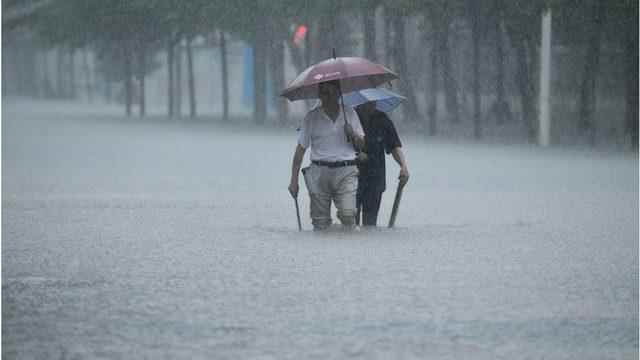According to a new study by the UK Meteorological Service on behalf of the World Meteorological Organization (WMO), the probability of global warming to cross the 1.5°C threshold in the next 5 years has increased to 50 percent. The WMO report previously calculated this probability as 20 percent in 2022 and 40 percent in 2021.
While this warming may be temporary in the short term, researchers are concerned about overall warming levels. Researchers are almost certain that a new “hottest year on record” will be set between 2022 and 2026. According to forecasts, temperatures during this period will be 1.1°C to 1.7°C higher than pre-industrial.
HIGHEST POSSIBILITY EVER
According to the researchers, the probability of global warming exceeding 1.5 °C between 2022 and 2026 is 48 percent. This is the highest probability seen to date.
Greenhouse gases that have accumulated in the atmosphere at an unprecedented rate in the last 30 years have caused global temperatures to increase at an unprecedented rate.
In 2015, average temperatures increased by 1°C for the first time compared to the pre-industrial period. The Paris Agreement, which aims to limit global warming to 1.5°C, was also signed in 2015.
2016 AND 2020 WERE THE HOTEST YEARS
Over the past 7 years, global temperature increases have been around 1°C. 2016 and 2020 were the warmest years on record.
Scientists say the consequences of around 1°C of warming are already being seen, such as the unprecedented wildfires in North America last year or the severe heatwaves in India and Pakistan.
The lead author of the report, at the Department of Meteorology, is Dr. “I think people are already very concerned about climate change. (The data) shows that we continue to warm the planet and that we are approaching this first threshold set in the Paris Agreement. It’s alarming. We need to do everything we can to reduce the use of fossil fuels,” says Leon Hermanson.
“NO MORE ROOM FOR REHAVED”
A temporary rise in temperatures above 1.5°C is not the same as a sustained increase, the researchers say. If the 1.5°C threshold is exceeded in the next 5 years, there is a possibility of falling again. But now there is no room for complacency.
Professor at the World Meteorological Organization. “As long as greenhouse gas emissions continue to rise, temperatures will continue to rise,” said Petteri Taalas.
“However, our oceans will become warmer and more acidic; sea ice and glaciers will continue to melt; sea levels will continue to rise and extreme weather events will increase,” he said.

According to the research, the Arctic region will feel a greater warming effect over the next five years than the rest of the world. The researchers say temperatures in these regions will rise three times more than the long-term average.
This is predicted to happen during the El Niño season, the ocean-atmosphere event in the Pacific that pushes global temperatures up.
From the British Meteorological Service, Dr. “The year we temporarily exceed 1.5 degrees will likely be an El Nino year,” Hermanson said. said.
Dr. Hermanson reminded that 2016, the hottest year on record, was also an El Nino year.
